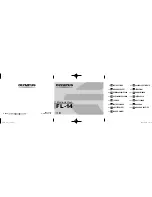
15
Concepts in Photography
The size of the aperture is represented by a value known as an
“F-number.” The f-number represents the focal length divided by the
diameter of the lens. For example, if a lens with a 50 mm focal length
has an f-number of F2, the diameter of the aperture is 25 mm.
(50 mm/25 mm=F2) The smaller the f-number, the greater the size of
the aperture.
The opening in the aperture is described as the Exposure Value (EV).
Increasing the Exposure Value (+1 EV) means the amount of light
doubles. Decreasing the Exposure Value (-1 EV) means the amount of
light halves. You can also use the exposure compensation feature to
fine-tune the amount of light by subdividing exposure values into 1/2,
1/3 EV, and so on.
+1 EV
F1.4
F2
F2.8
F4
F5.6
F8
-1 EV
Exposure Value Steps
Aperture value and the depth of field
You can blur or sharpen the background of a photo by controlling the
aperture. It is closely related to the depth of field (DOF), which can be
expressed as small or large.
A photo with a large DOF
A photo with a small DOF
The aperture housing contains several blades. These blades move together
and control the amount of light passing through the center of the aperture.
The number of blades also affects the shape of light when shooting night
scenes. If an aperture has an even number of blades, light divides into an
equal number of sections. If the number of blades is odd, the number of
sections is double the number of blades.
For example, an aperture with 8 blades divides light into 8 sections and an
aperture with 7 blades into 14 sections.
7 blades
8 blades
















































